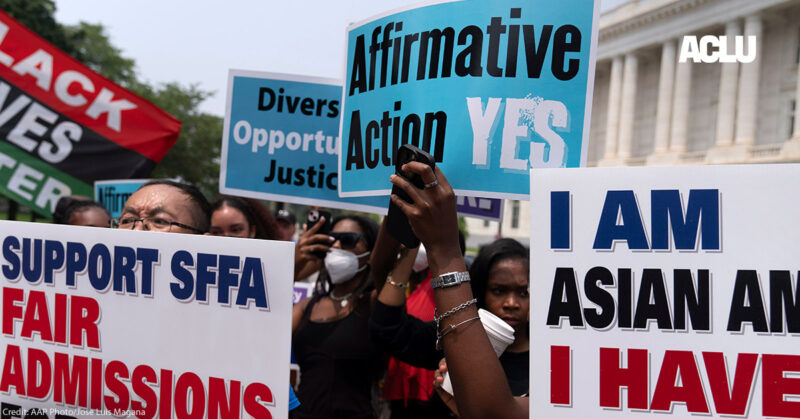Here are some important requirements you should consider:
Many companies are facing hard decisions as financial challenges continue and the fear of recession lingers. Recent headlines have shown even the biggest companies like Amazon and Microsoft are not immune to these challenges and have been forced to initiate reductions in force, more commonly known as a layoff. While layoffs can reinvigorate companies financially or in some circumstances save them from ruin, they are always difficult for those in the decision-maker seat to implement. As an employer, the time to plan for a layoff is well before it happens, and there are several practical considerations to anticipate.
What to think about before a layoff?
While the decision on who and when to lay off is ultimately guided by the financial and operational needs of a company, there are several considerations companies should be aware of.
1. Don’t Discriminate
While it may be obvious that companies should not institute layoffs in order to terminate a protected class of individuals, companies should assess, pre-reduction, whether the group of individuals who are in the separation group would result in a discriminatory practice by the company. For instance, companies should look at the makeup of the reduction; is there a disproportionate number of workers who are over 40, that are women, or that are persons of color? To learn more about how businesses can avoid discrimination in layoffs, the Equal Employment Opportunity Office has issued this guidance.
2. Review Restrictions in Employee Contracts
Before initiating a layoff, companies should review any relevant employee contracts which could contain limitations on who and when layoffs can occur. For instance, union-related contracts can include certain limitations and standard employment contracts may require severance payments or notice periods.
3. Is advance notice required?
The type and size of your business and the layoff, in general, may determine whether you are required by law to provide advance notice of a layoff to your employees. For instance, under the Worker Adjustment Retraining Notification Act (the “WARN Act”), with some exceptions, employers with 100 or more full-time employees must provide 60 calendar days written notice of: a worksite closing affecting 50 or more employees; a mass layoff affecting at least 50 employees and one-third of the worksite’s total workforce; or, 500 or more employees at the single site of employment during any 90-day period. This advance notice requirement can also apply to certain temporary layoffs or furloughs that last longer than 6 months.
What should be included in a Severance Agreement?
Once you have determined who will be included in the reduction in force, it’s time to determine how the company will execute the layoff. It can be a good idea to consider a severance payment in exchange for a release of legal claims, even if you do not believe you have violated the employee’s rights. Here is a list of common considerations;
1. Severance
Absent a requirement in an employee contract that requires severance, companies are not legally obligated to provide severance payments in a layoff, though offering severance in exchange for a release of claims offers a number of benefits. First, severance payments, even in smaller amounts, can limit pushback from employees and smooth the transition. Second, the release protects the company from future litigation. Third, establishing a reputation for offering severance acts as a safety-net, and can increase employee retention. Please note that severance does not include payments that may be legally due at termination, such as accrued and unused vacation time, or sick time, earned wages, commissions, or bonuses.
2. Reduction in Force (RIF) requirements in the Age Discrimination in Employment Act (“ADEA”)
If you are terminating employees who are over the age of 40, there are certain provisions that must be included in any separation agreement. At a minimum, releases must;
- Be in writing and in a manner reasonably calculated to be understood by the employee;
- Specifically refer to the rights and claims protected under ADEA;
- Exclude claims which may arise after the execution of the release.
- Provide for consideration, or something of value in addition to which the employee is already entitled, such as a payment of severance or other benefit;
- Advise the employee in writing to consult an attorney before executing the release.
- Give the employee 21 days to consider the offer; and
- Give the employee 7 days to revoke the agreement after signing.
However, these requirements may change depending on how many persons over 40 included in the layoff. If there are two or more employees in the layoff who are over 40, or the release is used in connection with a group program, there are additional requirements employers must also inform the employees of which include;
- Employees are given 45 days to consider the offer, instead of 21;
- Employees must be provided with information, in writing, relating to the class, unit or group of individuals in the layoff, eligibility for the layoff, the job titles and ages of all individuals being laid off, and the ages of all employees in the same class who are not being selected for the layoff
Concerned about layoffs? Reach out to us about questions you may be having below:
3. Employees working in multiple states
With the rise of remote workers, companies have hired more remote employees from all over the United States and abroad. If your company has employees working from different states or countries, it is important that any releases relating to terminations or layoffs account for the different state laws which may be applicable.
4. New Considerations Relating to Confidentiality and Non-Disparagement Provisions
In February 2023, the National Labor Relations Board ruled that the proffer of broad confidentiality and non-disparagement provisions in severance agreements violates the National Labor Relations Act. To read more about the implications of this decision, see fellow Gesmer attorney Jason Armiger’s article titled How the Recent NLRB Decision Affects Your Severance Agreements.
In short, layoffs are complicated. Companies that fail to plan for and execute layoffs properly may expose themselves to company-ending liability. If your company is considering implementing a layoff, Gesmer can help guide you through the various laws and considerations.
Check out some of our latest publications.
- NVCA FORMS: What Are They and Why Should You Care?

- What is a Provisional Patent Application?

- CLIENT ALERT: Supreme Court Rejects Rule Requiring Majority-Group Plaintiffs To Meet Higher Evidentiary Standard for Title VII Claims

- Executive Order Seeks to Eliminate Disparate Impact Liability in Title VI & VII Enforcement Actions

- Client Update – Executive Order Upends Affirmative Action For Federal Contractors and Opens Door to False Claim Act Liability

- How to Find Venture Capital for Early-Stage Scaling Companies

